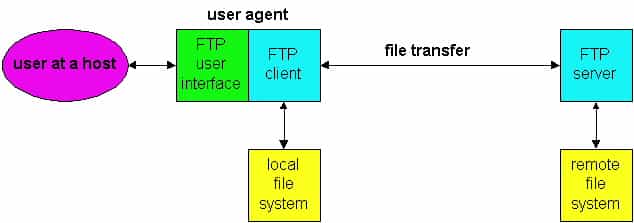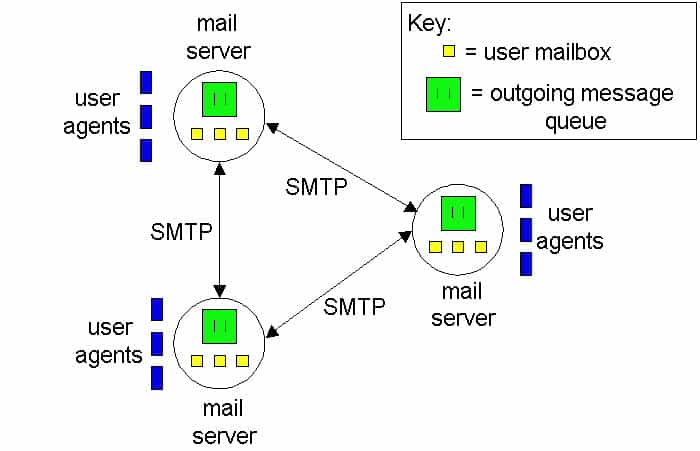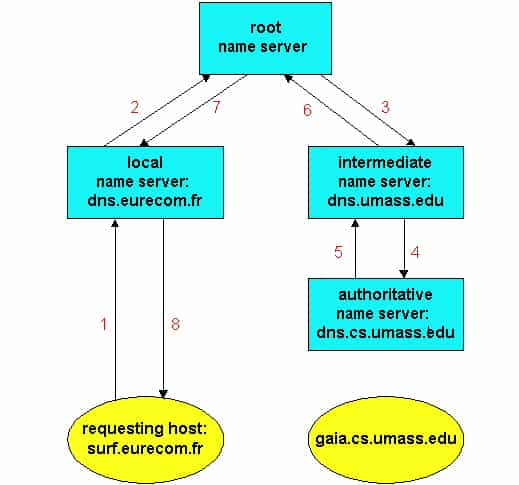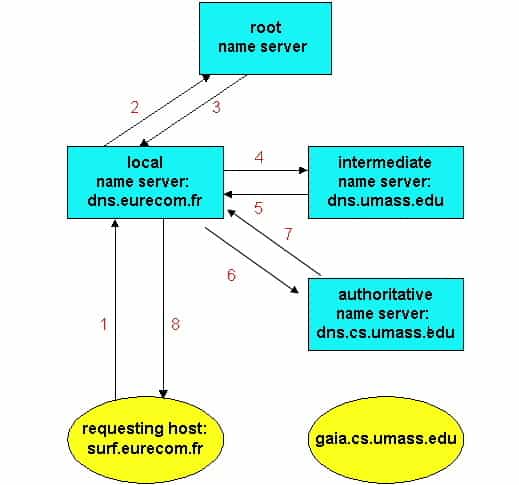計算機網路(6)
接着上周的 HTTP ,本周的內容主要有 FTP( File Transfer Protocol ), SMTP( Simple Mail Transfer Protocol ), DNS( Domain Name Service ) 。
FTP

- client-server model:client 與 server 的模式。
- out-of-band:這也是 FTP 區別於 HTTP 的地方,也就是說 FTP 採用兩個平行的 TCP 連接,包括 control connection( port #21 ) 跟 data connection( port #20 )。
- stateful operation:FTP server 必須記錄下關於用戶的狀態,而 HTTP 則不同,它不需要記錄任何用戶的狀態,也就是 stateless 。
- commands, status code, phrase: FTP 的通信指令採用 7-bit ASCII 格式。
SMTP

由上圖可以看出,郵件操作主要依賴於 UA( User Agent ), Mail server, SMTP 三者。
SMTP 工作在 port #25
下面來看 SMTP 與 HTTP 的區別:
- SMTP: push technology; HTTP: pull technology.
- SMTP: multiple objects transmit; HTTP: one object per time
- SMTP: R/W; HTTP: Read only
當然 SMTP 與 HTTP 都是類似 request-response 的概念,都有 ASCII control, status code, phrase
DNS
DNS 主要提供域名解析服務,將易讀的 hostname 解析成 IP address ,其功能類似於 Indirect 方式。而為了解決規模過大的問題,採用 divide and conquer algorithm ,具體來說是採用 hierarchical data structure ,分為 root DNS server, top-level domain( TLD ), authoritative DNS server。
DNS 採用分散式架構的優點主要有:avoid single point of failure, keep load balance, reduce internet traffic
Recursive queries:

Iterative queries:

習題
-
解釋說明執行FTP的過程/運作流程
建立 TCP 連接,透過 TCP 連接發送 FTP 指令,前面說到,指令通過21端口傳輸,包括 USER username, PASS password 來驗證登錄,還有 LIST 指令來發送傳輸的文檔列表。之後返回的信息可能是 331 Username OK, password required, * 125 Data connection already open; transfer starting*… 如果一切順利就可以通過20端口進行資料的傳輸。
-
編寫程式比較 recursive 與 iterative 的區別
#include <stdio.h> int recursive(int i) { if (i > 1) i *= recursive(i-1); return i; } void main() { int n; scanf("%d", &n); printf("%d\n", recursive(n)); }void main() { int i, n; scanf("%d", &n); for (i = n-1; i > 0; i--) { n *= i; } printf("%d\n", n); }簡單來說, recursive 的程式越下層負擔越輕,最上層的負擔最重。而 iterative 程式的負擔是均等的,每一次都是一樣的運算。